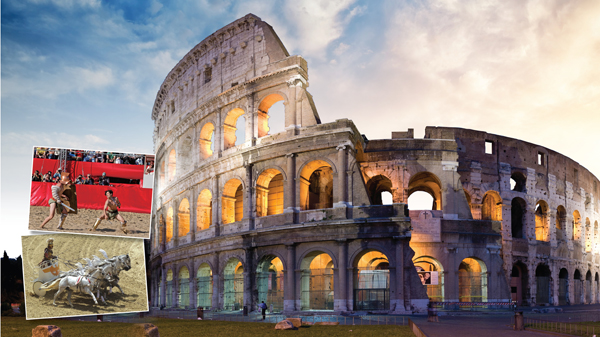As the centre of one of the most powerful ancient civilisations, Rome has fascinated and enchanted people the world over for millennia. Aptly dubbed the Eternal City – its founding dates back some 2,800 years to 753 BC – this UNESCO World Heritage Site is brimming with historic monuments and artefacts that illuminate its importance and relevance through the ages. Indeed, even today, it wouldn’t be a stretch to say that elements of ancient Rome continue to impact our daily lives, be it through culture, healthcare, education or even democratic rule.
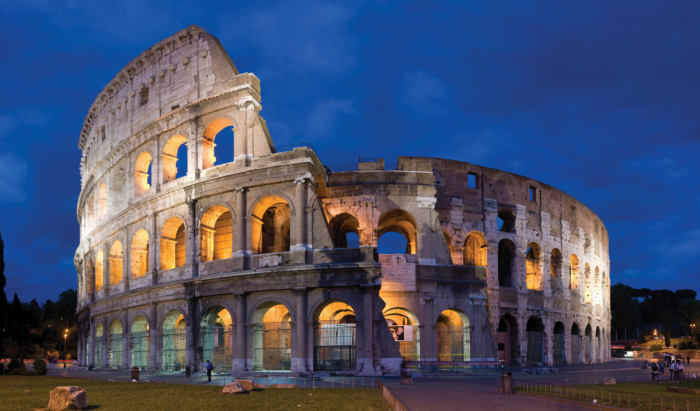
Unsurprisingly, then, its modern-day incarnation consistently tops the must-visit lists of travel publications across the globe, with the metropolitan city’s 4.3 million inhabitants annually overrun by nearly double their number in tourists during pre-Covid times. So what, exactly, draws these intrepid travellers? Ancient wonders? Majestic artworks? Delicious food? A vibrant culture? The answer: all of the above. Here are some of the most iconic sites to feast your eyes upon when in Rome…
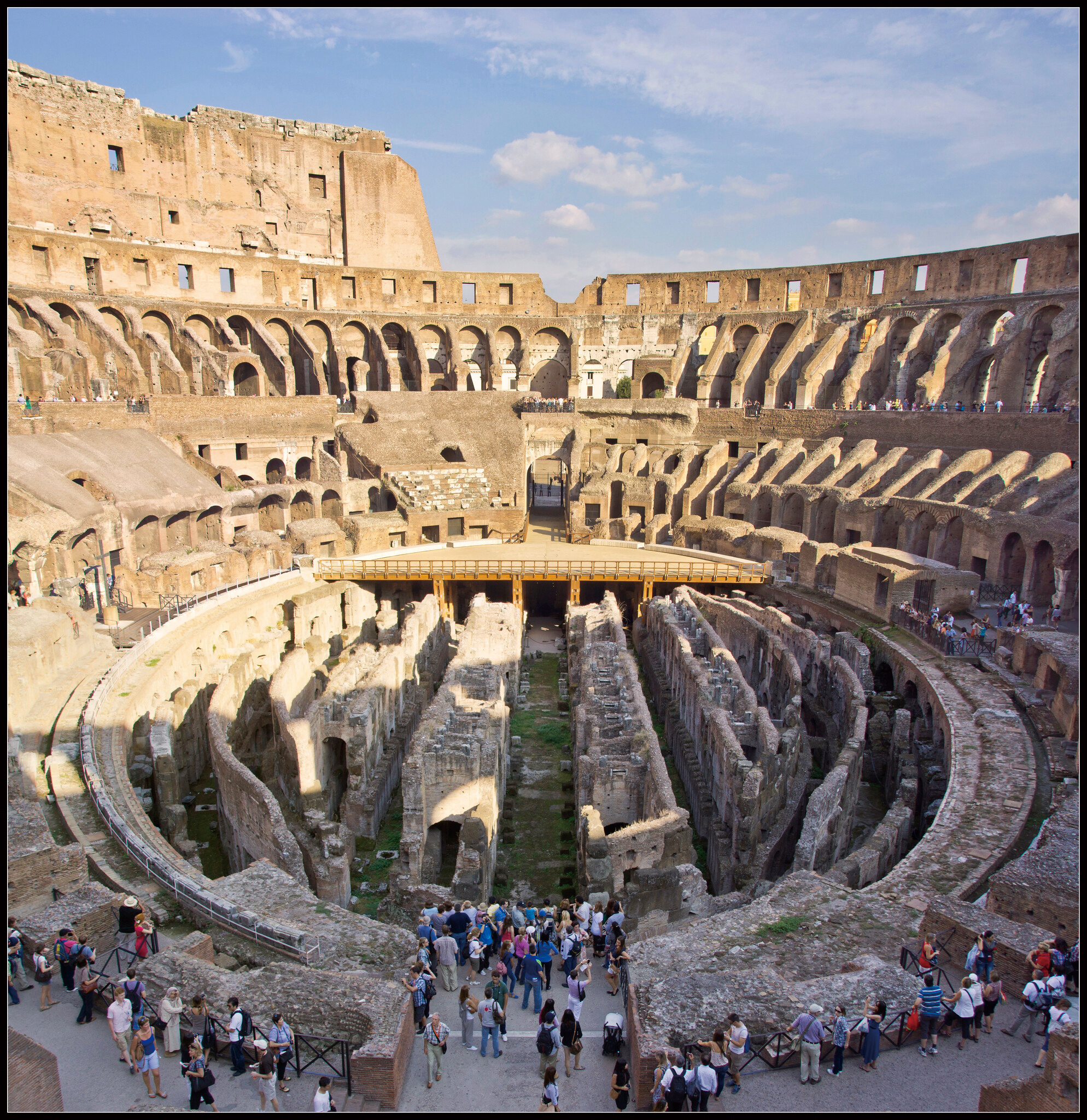
Glory & Gladiators
Perhaps the most instantly recognisable tourist destination in Rome, the oval amphitheatre known as the Colosseum lies at the heart of the city. So intrinsically linked is it to the Italian national identity that it even graces the country’s five-cent coin. Construction of this massive arena was completed in 80 AD under the rule of Emperor Titus, and during its heyday, the structure – originally dubbed the Flavian Amphitheatre – could hold as many as 50,000 eager spectators.
Today, the massive limestone, tuff and concrete building may be devoid of the skilled gladiators, exotic animals and roaring crowds that occupied it some two millennia ago, but its historic and dramatic aura remains palpable. The venue boasts countless items of interest, but the time-pressed traveller should make sure to visit the morbidly named ‘Gate of Death’ – through which the dead and injured were carried out of the Colosseum – the arena floor where matches took place, and the hyper exclusive hypogeum, the complex labyrinth of tunnels that competitors and staff used to navigate the edifice’s length in ancient times. While the former is open to general-admission ticket holders, the latter two are only accessible via guided tours.
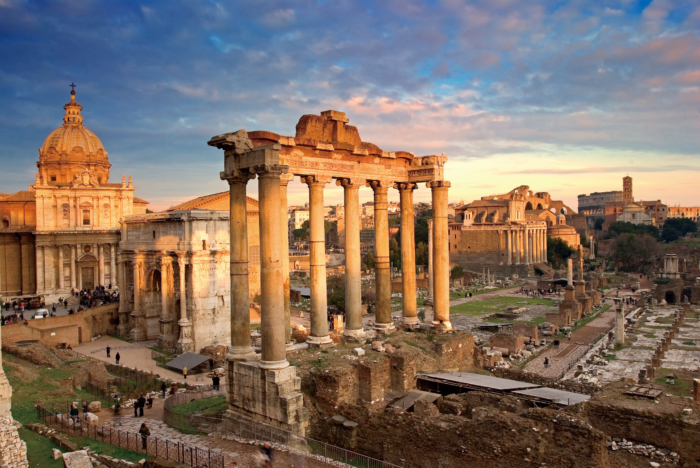
Epicentre of the Empire
Located a stone’s throw from the Colosseum is the Roman Forum. For centuries, this rectangular plaza dictated the rhythm of life in the city. It was the venue where triumphal processions ended along the Sacred Way, where commercial affairs occurred, where elections, trials and public speeches were held, and where Rome’s politicians decided the fate of all those living within its far-flung empire. Despite the fact that much of the original structure has since crumbled with the passage of time, an air of importance and solemnity still marks the remaining temples and pillars.
To get an insight into how it originally appeared, head to the Curia Julia. The former home of the Roman Senate – centuries before being converted into a church – remains one of the most intact structures at the Forum. Further on, you’ll find the Arch of Septimius Severus, which was constructed in 203 AD by the eponymous emperor to celebrate his victory over the Parthians (whose ancient empire lies in modern-day Iran). One of the largest arches in Rome, it stands some 23m high and boasts intricately carved reliefs. Among the temples venerating various deities on site, the Temple of Caesar (dedicated to Julius Caesar) is perhaps of foremost importance.
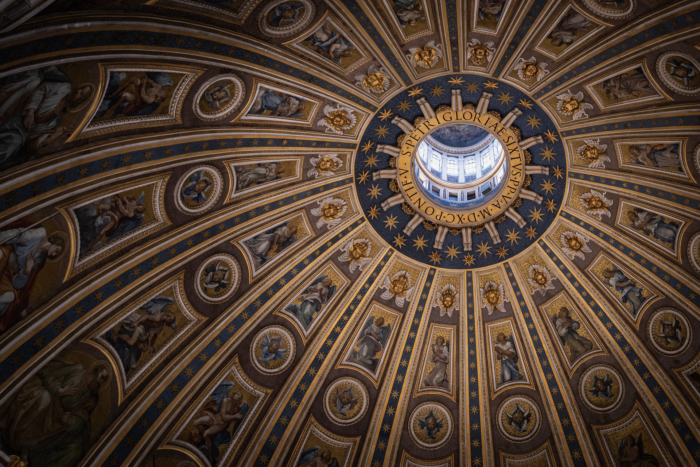
Eye for Art
In a city awash with ancient ruins, it is perhaps the Pantheon that stands today as the most complete. Thought to be over 2,000 years old, the temple – originally believed to be dedicated to pagan deities like Neptune, god of the sea – became a Catholic church in 609 AD and features stunning works by some of Italy’s most renowned Renaissance painters. This includes the legendary Raphael, who would eventually make the Pantheon his final resting place, and whose tomb can still be visited. Perhaps even more impressive, though, is its dome, a 43m-high perfect half-sphere with a central open-air oculus. An impressive architectural feat for its age, the majesty of its soaring walls continues to thrill travellers to this day.
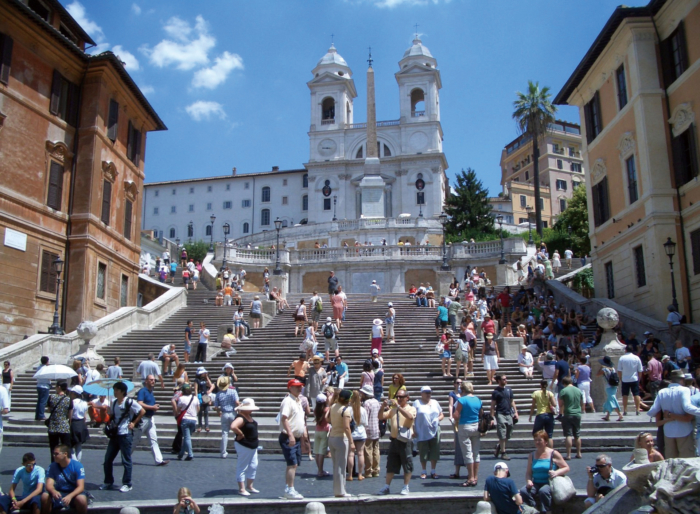
Stairway to History
Having featured in such notable movies as Roman Holiday (1953) starring Gregory Peck and Audrey Hepburn, 1999’s The Talented Mr Ripley and more recently in 2015 spy-thriller The Man from U.N.C.L.E., the Spanish Steps are one of Rome’s most popular sights. First constructed in 1725, the stairway immediately became a hotspot for English visitors stopping in the city during their Grand Tour. Today, its popularity remains undiminished, and the top of the 135-step climb remains a great space to take in the city’s sights and people.
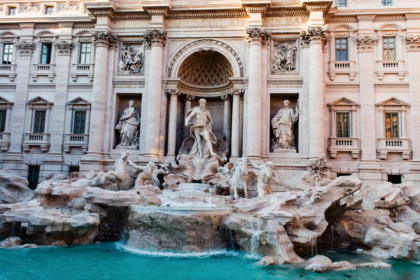
Appetite for Piazza
Past splendour and modernity meet in spectacular fashion at the Piazza Navona, a capacious open-air square punctuated with classic architecture, Baroque water features, historic churches alongside street artists, contemporary eateries and even a selection of retail outlets. At its centre stands Bernini’s iconic Fountain of Four Rivers, while underneath, you’ll find the Stadium of Domitian, a UNESCO site that was once an ancient athletics stadium seating some 20,000 spectators. Some of the city’s best culinary offerings can be found in the square, including traditional Roman-style pizza and mouth-watering pasta dishes such as cacio e pepe.
For a peek into local life, venture forth to Campo de’ Fiori, another open-air plaza just to the south of Piazza Navona. Since 1869, it has hosted a daily fish and vegetable market, and city dwellers gather to peruse the copious fresh, locally sourced produce. Once the sun dips below the horizon, the market gives way to outdoor cafes, where you can mingle with locals and toss back a well-deserved espresso – or beer – or several. Saluti.
The full version of this feature appears on Gafencu Magazine’s February 2022 print issue as ❝Roman Legacy❞ by Tenzing Thondup. Download the free app (iOS, Android) for digital editions of the magazine.



